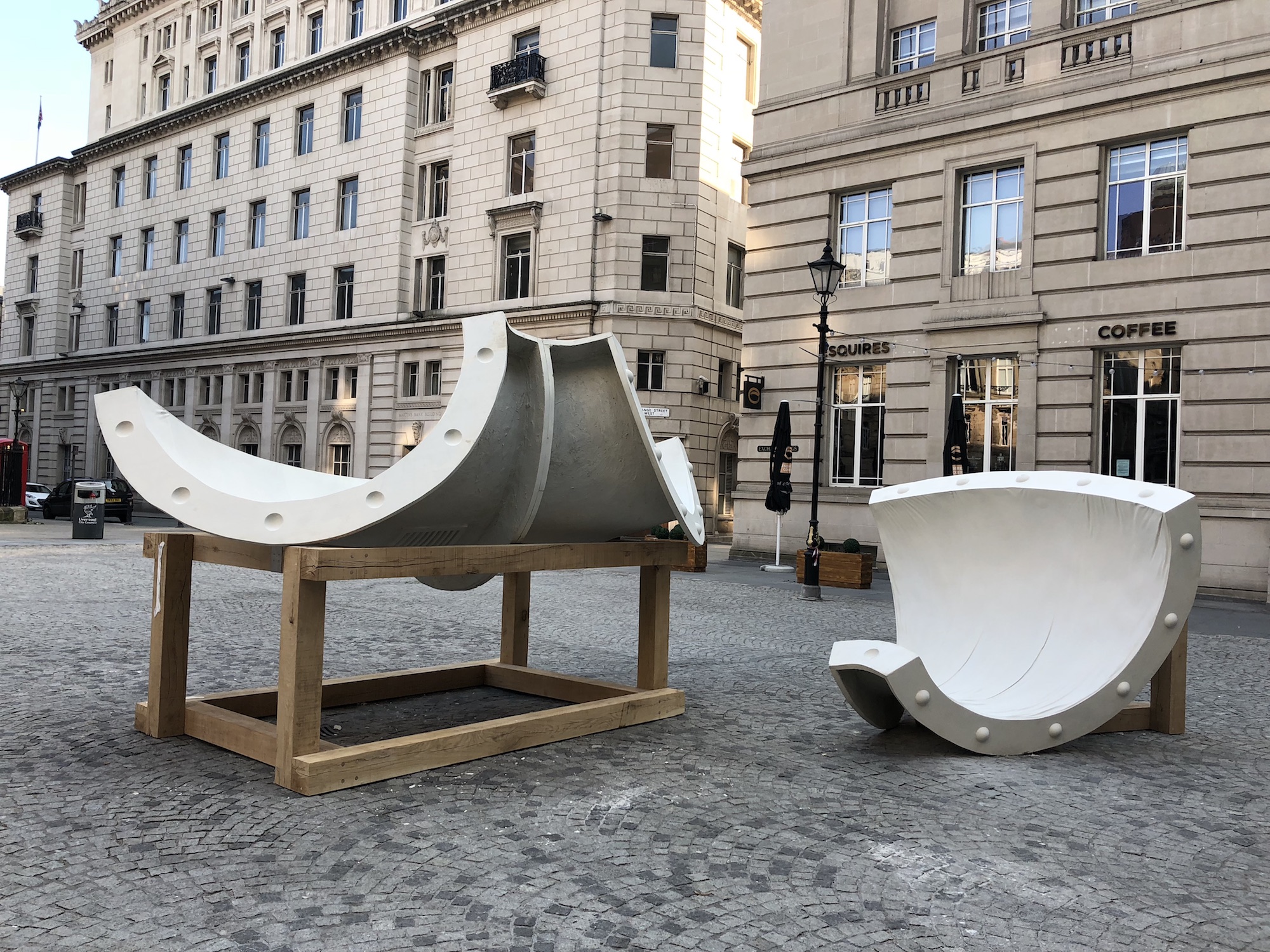Holly Hendry is a London-based artist whose sculptural work questions traditional architectural disciplines. Employing, and sometimes exploiting the language of architecture and building, her ‘materially overwhelming’ sculptures use scale to challenge the notion of space, often combining function with the ridiculous.
Hendry’s non-traditional architectural approach is permeated by a fascination with rear spaces and open cracks ‘where you can see the gooey insides’. Works such as Wrot (BALTIC, Gateshead, 2017) use a variety of materials, from Jesmonite to steel and foam, to represent oozy forms, peppered with absurd, comic elements, such as dog chew bones and spinning plaster teeth. Hendry’s sculptures attempt to materialise actions; things are chopped, extruded, squashed and stretched to their spatial or material limits, such as her work Slacker shown at Yorkshire Sculpture Park (September 2019 – April 2020).
Themes of bodily containment and disposal are prevalent in Hendry’s work. Her outdoor commissions for the 2018 Liverpool Biennial – Cenotaph – examined the architectural anatomy of our surroundings, using huge slices of industrial-looking pipe to represent the innards and plumbing of the city itself.
Using research from archives such as ‘The London Crossrail Archeology Archives’, Hendry often draws on specific objects and our bodily or architectural relationship with them. Her work for the Lyon Biennale Deep Soil Thrombosis (2019) investigates this relationship by looking at the use of air ducting that points to architectural and biological systems behind the walls and under our feet, and how these systems connect bodies to buildings.
